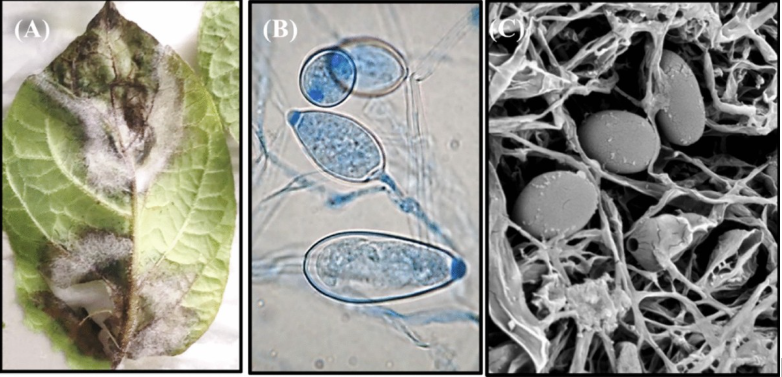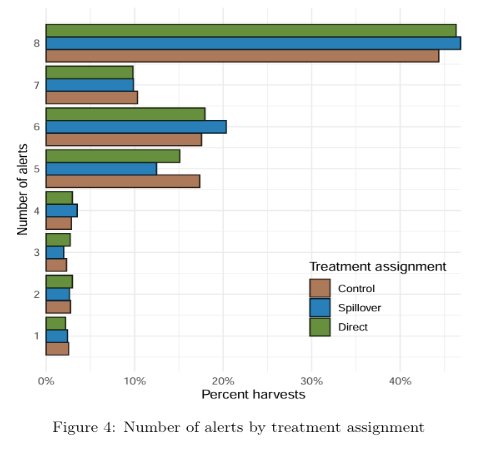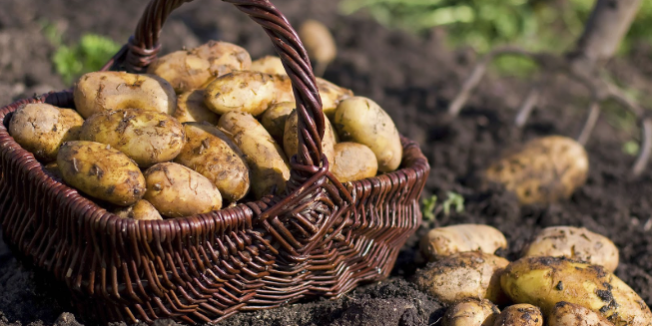Are late blights still a thing in 2025? Lessons from Bangladesh’s early warning solutions and their efficacy for blight control
By Kazi Farhana, mPower
Potatoes are an essential part of diets worldwide, and in Bangladesh, they are much more than just a staple food. As the country’s second-largest crop, potatoes play a vital role in ensuring food security and supporting the livelihoods of millions of farmers. However, maintaining healthy potato crops is a constant battle, with threats like late blight posing significant challenges. As global agriculture increasingly embraces technology, Bangladesh has emerged as a hub for innovative solutions aimed at combating crop diseases and optimizing farming practices.
This blog explores the ongoing issue of potato diseases in Bangladesh, specifically late blight, and delves into how data-driven solutions like Geopotato are transforming disease management. By examining real-world impacts and highlighting lessons learned, we aim to shed light on the critical role technology plays in building resilient agricultural systems.
A Persistent Problem in Potato Farming
Potato is a staple crop in Bangladesh, both in terms of food security and income generation. As the second-largest food crop in the country, it occupies approximately 450,000 hectares during the dry winter season and engages millions of smallholder farmers.
Nevertheless, late blight, which is caused by the fungus “Phytophthora infestans,” remains a devastating adversary. In a bad season, annual yield losses range from 25% to 57%, with some fields seeing 70% devastation within just 48 hours of infection onset. These outbreaks not only erode farmer incomes but also result in increased fungicide use, environmental degradation, and compromised food safety.
Current Challenges in Late Blight Control

Bangladesh faces several difficulties in managing late blight, especially because of the nation’s erratic weather patterns. High humidity and long spells of low temperatures, which are typical during the winter potato-growing season, are ideal for the illness, which is brought on by Phytophthora infestans. Unexpected rains or fog, for example, might provide conditions that encourage the spread of the disease quickly, making it challenging for farmers to properly schedule fungicide applications. According to a study, controlling late blight outbreaks in Bangladesh has become more difficult due to the appearance of aggressive strains like the EU_13_A2 lineage.
Smallholder farmers’ limited access to timely and reliable information exacerbates the problem. In an effort to protect their crops, many turn to repeated and premature fungicide treatments in the absence of trustworthy advising services. In addition to raising production costs, this approach presents serious health and environmental hazards. Fungicide overuse has been connected to soil and water resource pollution, which has a negative impact on human health and biodiversity.
These difficulties highlight how urgently focused, effective, and long-lasting solutions are needed to lessen the effects of late blight in Bangladesh. Better disease control results and more sensible use of fungicides can result from the implementation of early warning systems and the provision of real-time data to farmers. By conserving agricultural yields and cutting input costs, such strategies not only aid in the reduction of environmental pollution but also improve farmers’ financial security.
The Role of Early Warning Systems: GEOPOTATO’s Contribution
Bangladesh has adopted technology to address these issues, as seen by initiatives like Geopotato, a Decision Support Service (DSS) platform. When Geopotato estimates that local crops are susceptible and that blight risk is high, it triggers an alert. The alert sends both an SMS and a voice message to the relevant farmers, telling them that they should spray a fungicide appropriate for the time of the season within the next three days. Farmers can go to their village retailer to purchase fungicide and apply it to their fields.
Gain more insight into how Geopotato works.
Geopotato has made a significant impact, serving around 75,000 farmers, helping them save 26% on expenses and increase yields by 15%. The platform protects soil health and reduces excessive fungicide usage, which not only increases productivity but also advances sustainability.
To learn more about its impact, click here to download.

Real World Impacts
The practical benefits of Geopotato are evident in regions like Rangpur, where late blight outbreaks are common. Predicting periods of high blight risk is difficult. A common heuristic for high risk is multi-day periods where temperatures lie between 50-60F and relative humidity exceeds 90%. Farmers adhering to its advisories have reported noticeable reductions in input costs and significant improvements in yields.
Approximately 75,000 potato farmers across Rangpur, Dinajpur and Munshiganj received Geopotato alerts till date by providing their location and expected sowing date prior to the start of the season, which are used to calibrate the alerts.
For instance, one farmer shared that by following Geopotato’s alerts, his fungicide expenses dropped by 30%, while his potato harvest remained unaffected by late blight. Such examples underscore the value of timely, actionable data in agriculture.
Final Thoughts
The fight against late blight in Bangladesh implies the critical importance of leveraging technology to address agricultural challenges. With solutions like Geopotato, late blight shall not be a thing in 2025. It demonstrates how data-driven approaches can empower farmers, reduce costs, and promote sustainable farming practices. By embracing such innovations, Bangladesh is not only safeguarding its potato industry but also setting an example for other nations striving to build resilient agricultural systems in the face of climate and disease-related challenges.




